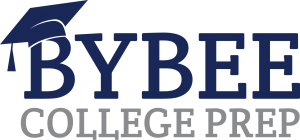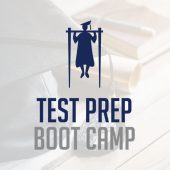A faculty committee from The University of California system made a long-anticipated announcement about its recommendations of what the university system’s policies should be about using the SAT and ACT as a part of the admissions process.
The convoluted nature of that single sentence gives you a sense of how complicated the issues are surrounding the “test optional movement.”
Over the last few years, more schools have announced test optional admissions policies. These policies provide a path for students to be admitted in a number of ways relative to their test scores; however, there isn’t really a single test optional policy. Some schools like Bates University have been “test optional” for decades. Others like the University of Chicago announced a “test optional” policy where applicants can choose whether or not to submit scores. Other schools are “test flexible” meaning they use test scores in some way as a part of the admissions process, but the exact method can vary widely.
The attraction of test optional
So, what’s behind the movement? Why does it seem more and more schools are choosing a test optional policy?
The typical press release from colleges who make the decision involves statements about how they recognize that students are more than a test score. That the college is committed to taking a look at the whole student.
Those platitudes are noble, and in cases like the UChicago or Wake Forest or Bates, they seem sincere. I’m not entirely convinced that the motives behind some of the recent announcements from Northern Illinois and Lourdes are quite as high-minded.
Northern Illinois already admits over 50% of the students who apply, and less than 25% of those who apply actually enroll at the university. About 1 in 8 of the students who apply will actually go to the university.

NIU 2018 admissions from College Navigator
NIU also had a mid-SAT of about 1080 and a mid-ACT of about 22. Those thresholds are not particularly onerous to begin with.

NIU 2018 test score ranges
Lourdes University had similar, albeit smaller, results. They admitted 89% of the 949 students who applied in 2018.

Lourdes 2018 admissions data
Like NIU, less than 25% of the 844 students they admitted enrolled in the Fall of 2018. Lourdes had a mid-SAT score of 1050 and a mid-ACT of 21.

Lourdes 2018 test score ranges
The numbers are typically similar for schools announcing a new test optional policy. Test scores were already not a barrier to acceptance, and they typically have a pretty low enrollment percentage (aka “yield”). So what else could it be?
More applications, lower acceptance rates
According to a 2018 study from the National Association of College Admissions Counselors (NACAC), test optional policies typically result in more applications for the university. The NACAC study tracked the results at 28 schools over a number of years, and this was a consistent result.
Some skeptics note that more applications for the same number of seats means a lower acceptance rate. That’s just the math of it, right? However, moving from 89% to 78% acceptances isn’t going to make Lourdes suddenly look selective. It’s unlikely that’s at the core of what they’re trying.
But more applications could mean more enrollments. Colleges, especially private liberal arts schools, saw another drop in enrollments in 2019. In a 2019 article, over 50% of admissions officers told Inside Higher Ed they had not met their enrollment goals by July of 2019. About 6 weeks ahead of the start of the semester, they still had empty seats, which meant lost revenue.
We’re in the midst of a demographic bubble. According to the National Student Clearinghouse, 2019 saw the 8th consecutive year of a drop in college enrollment. Total college enrollment is down over 10% since 2011.
There are lots of reasons: a better economy, demographic dip in 18-20 year olds, increasing costs of colleges. Regardless of the reason, colleges are competing for a shrinking number of students applying to college. They have to do something.
Financial Trouble
What we don’t have, probably for good reason, is a picture of the financial situation at these test optional schools. Sure, Wake and UChicago are fiscally sound. Not only do we hear about a few new schools with test optional policies every few weeks, but we also hear of a few schools closing or merging with another school. Understandably, these announcements aren’t met with the celebration that a test optional announcement gets; nevertheless, the closure or merger was often preceded by a test optional policy.
Unfortunately, most schools don’t make their financial situation nearly as visible as they do their new test optional policies. It’s difficult to know the exact financial situation at a particular college ahead of time.
The Test Optional Applicant
What about the student? Test optional policies are usually touted as a means to promote equity and diversity. That same NACAC study concluded that they do in fact do that. In almost all cases test optional policies encouraged students who wouldn’t have applied to the school to do so. Without a doubt, that is awesome.
The test optional applicant does have to judge where they’re applying to when deciding if test optional is right for them. UChicago announced that 10-15% of their 2019 freshman class did not submit scores. That’s an interesting number coming from a top-ranked research institution. One would think they’d be able to calculate an exact percentage. Seems like an easy enough number to provide. Instead they gave a range and labeled it as success. At Wake Forest, another top school often cited by test optional advocates, over 85% of their applicants still submitted scores, and Wake has had a test optional policy for over 10 years.
As attractive as test optional may sound, the vast majority of students are still going to need to submit scores to be competitive. The NACAC study indicated that test optional applicants were admitted at lower rates; however, they enrolled at higher rates. Apparently if an applicant chooses test optional, they are signalling they are more likely to enroll in that school. The test optional applicant just needs to be sure that the rest of their application compensates for the lack of test scores. Do they have grades that match what the school is looking for? Do they have accomplishments that will make them stand out? The rest of the application (essays, recommendations, etc.) is going to carry much more weight.
Not living up to the hype
In the end, test optional policies aren’t living up to the hype for most schools. For every UChicago that shakes the earth with its announcement, we hear from several dozen NIU’s and Lourdes who are struggling to attract students. Even worse, both of those schools have below a 25% 4-year graduation rate. A student enrolling at NIU or Lourdes as more than a 3-in-4 chance of not graduating in 4 years while racking up a price tag of around $80k based on their average net price.
For most students, the traditional process is still going to be the best. Work hard in your classes. Study for the SAT or ACT. Research schools to see where you’re a good match for what they’re looking for. Apply to those schools. That simple formula doesn’t need any additional bells and whistles; it just needs to be provided to more students.







